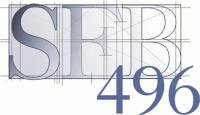|
Project
A1:
Charter and Book in the Symbolic Communication of Medieval Legal Communities and Realms.
| Abstract |
Project A1 studies the meaning of writing in public communication in the Middle Ages. The public use of texts is investigated with respect to media like royal charters and their seals, notary's instruments, statute books, and municipal statutes. The project concentrates on the different forms for the exercise of power, namely municipalities and other mutual benefit associations and hierarchically structured Realms. The long chronological perspective from the early Middle Ages into the late Middle Ages covers different writing cultures in which the symbolic value of the document was emphasized in quite varied ways. The project therefore pursues two approaches: By studying the performative use of writing, it takes into account the multimedia character of symbolic communication in the Middle Ages, and at the same time allows one to evaluate the role of writing in rituals, to understand those contexts of communication in which legally relevant documents were composed or used.
|
